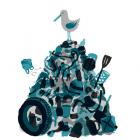Will our waste be the sediment of the Anthropocene? The world’s population produces 3.5 tons of waste every day. This number is expected to double by 2025 and the impact on our planet is already noticeable. Plastics in the ocean combine to form giant islands of waste and are then broken down into microscopic particles that will eventually find their way back into our food supply. On land, open landfills and incineration plants without filters contaminate the groundwater, air, and soil. Industrialized countries are responsible for the majority of today’s waste, but Asia and Africa are not far behind. We need to start dealing with our resources more responsibly and produce more goods that are fully biodegradable and can be reused indefinitely.
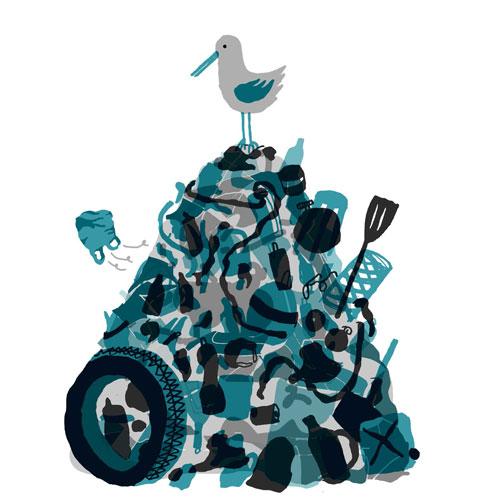
Waste
Leo Koppelkamm
Waste
Leo Koppelkamm
Drawn by Leo Koppelkamm , 2014.
 This work is licensed under a Creative Commons Attribution-NonCommercial-NoDerivatives 4.0 International License.
This work is licensed under a Creative Commons Attribution-NonCommercial-NoDerivatives 4.0 International License.
The Misunderstanding: Waste
Text and images by Leo Koppelkamm
University of the Arts (UdK), Berlin
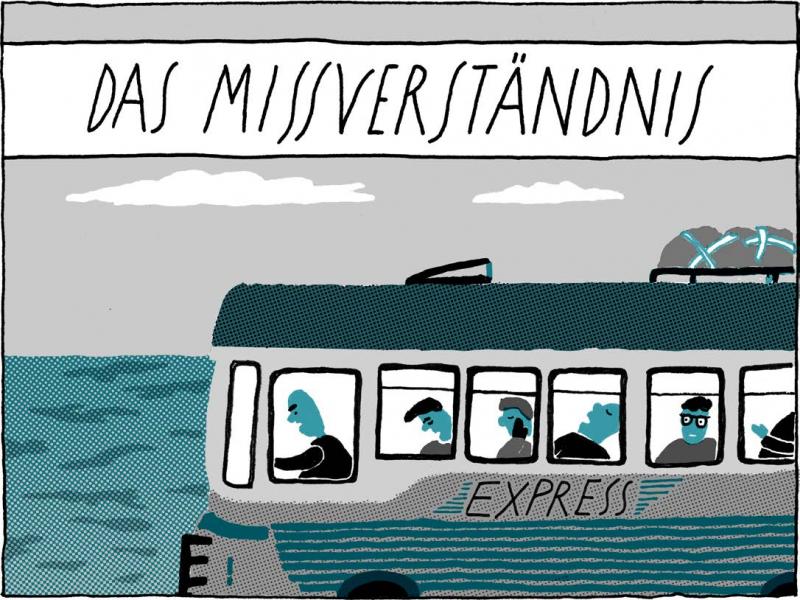
The Misunderstanding
The Misunderstanding
Drawn by Leo Koppelkamm , 2014.  This work is licensed under a Creative Commons Attribution-NonCommercial-NoDerivatives 4.0 International License.
This work is licensed under a Creative Commons Attribution-NonCommercial-NoDerivatives 4.0 International License.
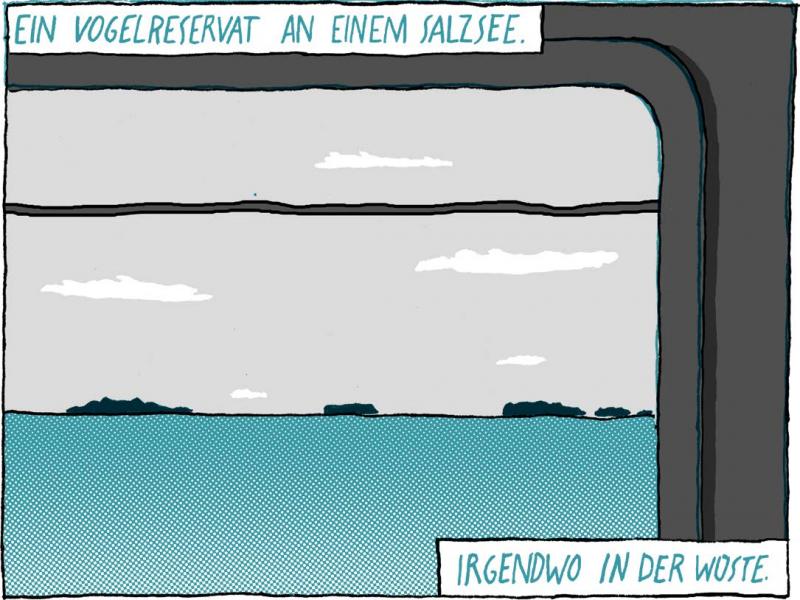
A bird sanctuary near a saltwater lake.
Somewhere in the desert.
A bird sanctuary near a saltwater lake.
Somewhere in the desert.
Drawn by Leo Koppelkamm , 2014.  This work is licensed under a Creative Commons Attribution-NonCommercial-NoDerivatives 4.0 International License.
This work is licensed under a Creative Commons Attribution-NonCommercial-NoDerivatives 4.0 International License.
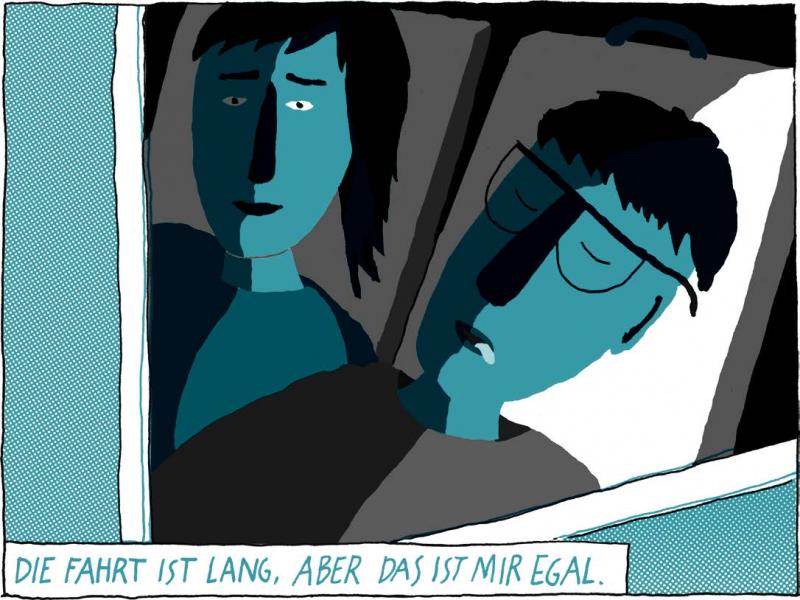
It’s a long trip, but I don’t mind.
It’s a long trip, but I don’t mind.
Drawn by Leo Koppelkamm , 2014.  This work is licensed under a Creative Commons Attribution-NonCommercial-NoDerivatives 4.0 International License.
This work is licensed under a Creative Commons Attribution-NonCommercial-NoDerivatives 4.0 International License.
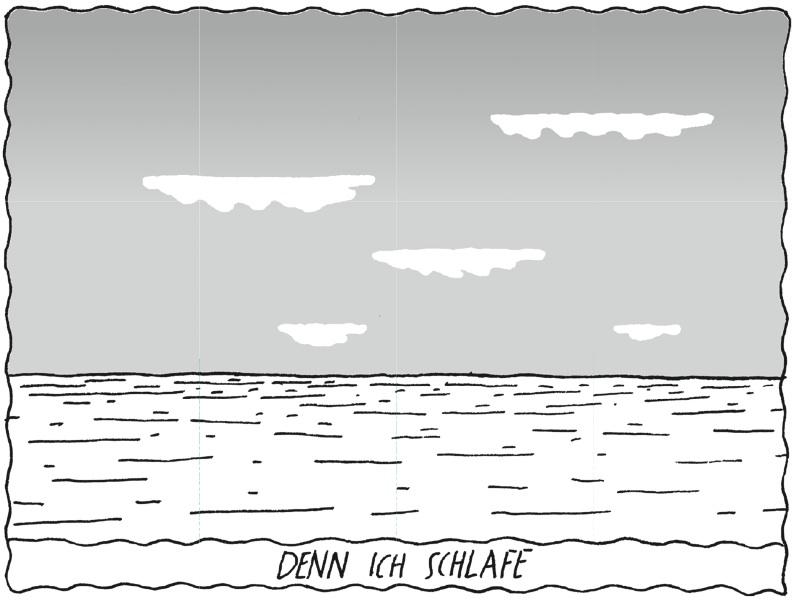
Because I can sleep.
Because I can sleep.
Drawn by Leo Koppelkamm , 2014.  This work is licensed under a Creative Commons Attribution-NonCommercial-NoDerivatives 4.0 International License.
This work is licensed under a Creative Commons Attribution-NonCommercial-NoDerivatives 4.0 International License.
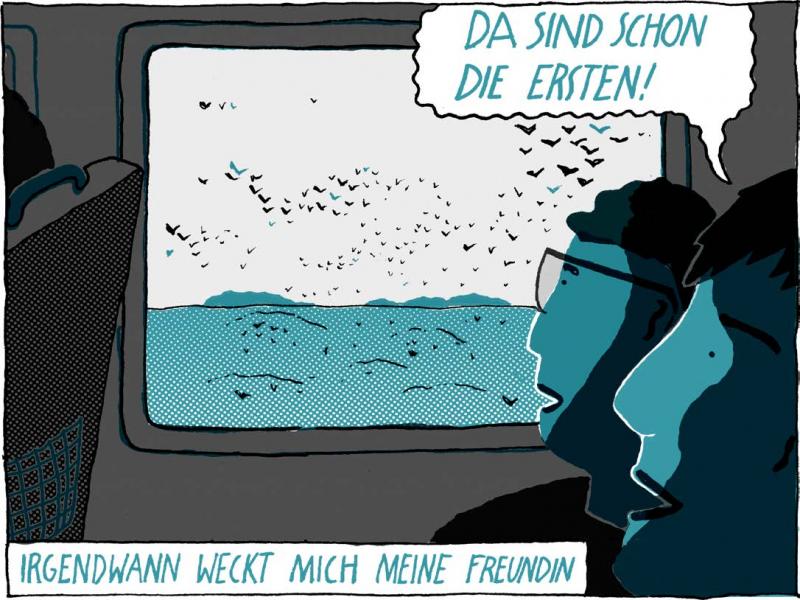
At some point, my girlfriend wakes me up:
“Hey look, the first ones!”
At some point, my girlfriend wakes me up:
“Hey look, the first ones!”
Drawn by Leo Koppelkamm , 2014.  This work is licensed under a Creative Commons Attribution-NonCommercial-NoDerivatives 4.0 International License.
This work is licensed under a Creative Commons Attribution-NonCommercial-NoDerivatives 4.0 International License.
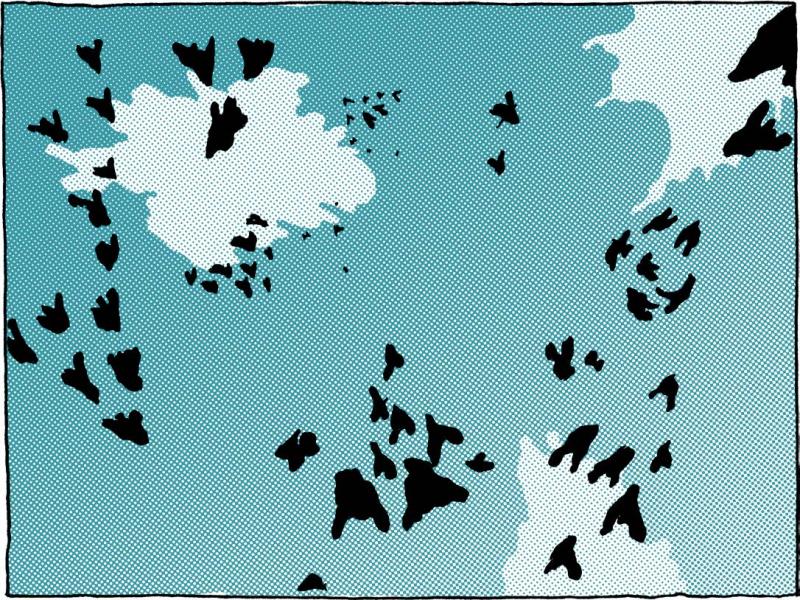
Drawn by Leo Koppelkamm , 2014.  This work is licensed under a Creative Commons Attribution-NonCommercial-NoDerivatives 4.0 International License.
This work is licensed under a Creative Commons Attribution-NonCommercial-NoDerivatives 4.0 International License.
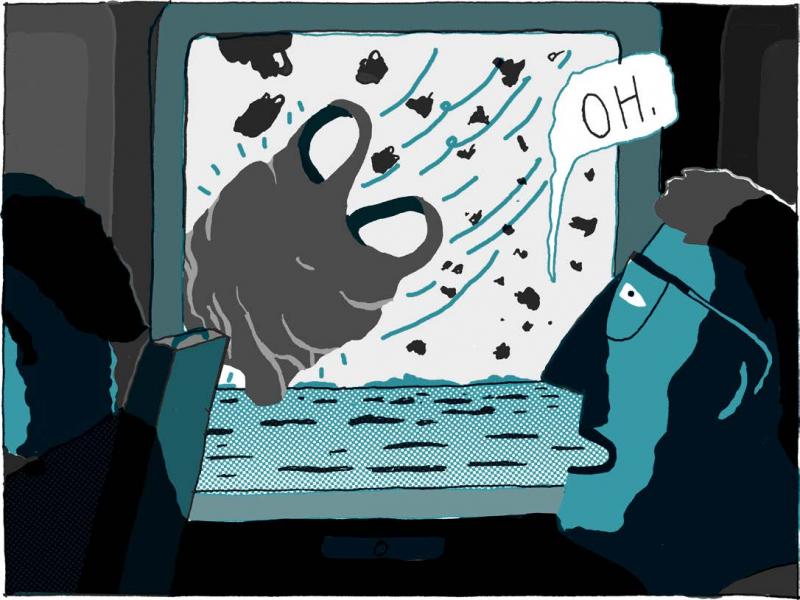
“Oh.”
“Oh.”
Drawn by Leo Koppelkamm , 2014.  This work is licensed under a Creative Commons Attribution-NonCommercial-NoDerivatives 4.0 International License.
This work is licensed under a Creative Commons Attribution-NonCommercial-NoDerivatives 4.0 International License.
 This work is licensed under a Creative Commons Attribution-NonCommercial-NoDerivatives 4.0 International License.
This work is licensed under a Creative Commons Attribution-NonCommercial-NoDerivatives 4.0 International License.

We didn’t see any birds on our trip.
But we sure did see plenty of plastic bags.
We didn’t see any birds on our trip.
But we sure did see plenty of plastic bags.
Drawn by Leo Koppelkamm , 2014.  This work is licensed under a Creative Commons Attribution-NonCommercial-NoDerivatives 4.0 International License.
This work is licensed under a Creative Commons Attribution-NonCommercial-NoDerivatives 4.0 International License.
Artist’s Comment:
While researching this topic, I was reminded of an experience I had while traveling through Morocco with friends. The waste that accumulated in the cities and villages were hauled out into the sand dunes as the wind carried loose plastic bags into the dessert. These were spread so far and wide that it was possible to recognize that one was approaching a new village by the density of plastic in the wind.
How to cite
Koppelkamm, Leo. “The misunderstanding: Waste.” Environment & Society Portal, Multimedia Library, 2014. http://www.environmentandsociety.org/node/6632/.
The comic also appears in Alexandra Hamann, Reinhold Leinfelder, Helmuth Trischler, and Henning Wagenbreth, eds., Anthropozän – 30 Meilensteine auf dem Weg in ein neues Erdzeitalter. Eine Comic-Anthologie (Munich: Deutsches Museum, 2014).
This work is licensed under a Creative Commons Attribution-NonCommercial-NoDerivatives 4.0 International License.


